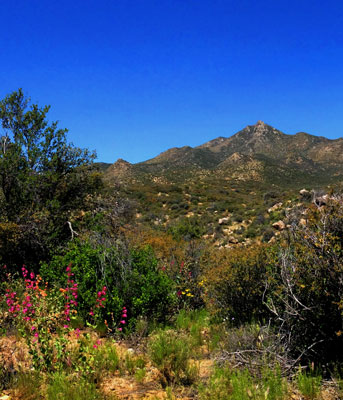
 |
||
|
|

AWC Community OrganizingConservation Concerns in the Kingman Field Office Travel Management PlanLearn more, get involved, and share your inputContact: Julie Polovitch, julie@azwild.orgThis spring AWC will be community organizing in Kingman, AZ. Our goal is to share with the public, the BLM, and stakeholders our conservation concerns relevant to the Kingman Field Office Travel Management Plan; empower citizen advocacy; and come up with responsible and practical negotiations. In 2004, the BLM Kingman Field Office (KFO) began the process of composing its Travel Management Plan (TMP). The TMP is designed to identify current uses and conditions of routes (roads, primitive roads, and trails) and regard the existing and future needs for transportation, access, and recreational opportunities. The BLM states, "The intent of this plan is to provide the public with a logical and sustainable travel and transportation network that addresses the diverse transportation, access and recreational needs of the public while protecting sensitive natural and cultural resources on public lands administered by the KFO." An environmental assessment accompanies the Travel Management Plan. Currently, the KFO manages its roads and trails based on the 1995 Recreation Management Plan. Twenty-four years post-Recreation Management Plan, these routes need updated management as they have undergone changes; for example, some have naturalized after not being used, some have gained popularity in the OHV community, and some have been identified in recently inventoried Lands with Wilderness Characteristics, areas qualified to someday become federally-designated Wilderness. The TMP has significant environmental implications since roads have direct, indirect, and cumulative impacts on wildlife and their habitats. In a comment letter submitted by the Center for Biological Diversity, Arizona Wilderness Coalition, Grand Canyon Wildlands Council, The Wilderness Society, and the Wildlands Network, the effects of roads are outlined: 
Hualapai Mountains LWC
Considering how transportation networks can disrupt wildlife, we want to highlight how important it is for the BLM to use sound science in order to minimize impacts to wildlife in the TMP. The yellow-billed cuckoo (threatened), southwest willow flycatcher (endangered), and desert tortoise (threatened) are at risk if the TMP is not carefully constructed. Furthermore, future Wilderness areas are at risk. Within the KFO, numerous areas have been inventoried and identified as Lands with Wilderness Characteristics. Routes in these areas must be acknowledged in the travel management planning process, and non-motorized travel should be prioritized as to provide opportunities for backcountry recreation experiences, while mitigating the consequences of roads previously described. Classifying roads as primitive and not to be maintained also helps ensure that the areas maintain their Wilderness character and are eligible for future incorporation into the National Wilderness Preservation System. After reviewing the Draft TMP and Environmental Assessment, the coalition shared several concerns. While we are pleased at the BLM's efforts to lower the road density, we have identified several ways for the KFO to improve the management plan. The coalition is calling for:
AWC will be conducting meetings to advocate for these measures and the conservation of priority areas. We will also host field outings to visit priority areas and inspect specific routes or areas that are under consideration or negotiation for conservation. The KFO Travel Management Plan has undergone a scoping period, and a Draft TMP and environmental assessment has been published for public review. The public comment period passed on November 30, 2018, and now the plan is being revised. The final product is set to be completed in the first half of 2019. While the TMP process is well under way, it is not too late to get involved. As the BLM makes their final decisions, it is important that they hear how the public supports road closures in favor of habitat connectivity, Lands With Wilderness Characteristics, and quiet recreation. In a comment to the Mohave Daily News, Matt Driscoll, BLM Kingman Office Outdoor Recreation Planner, stated, "The travel management plan is not the end-all, be-all. If the public comes to us with a concern, we can amend it. It's changeable in the future and it needs to be — if there is an issue we can address it and we can do so quickly." 
Joshua Tree Forest LWC Learn more by checking out the resource links provided below.Get involved by attending field outings.Check back soon for more details about upcoming field outings! And share your input by writing a comment letter to the BLM or letter to the editor for a local Kingman newspaper.Write about why this issue is important to you and how you would like the BLM to manage roads in the TMP. For further direction, contact julie@azwild.org. |